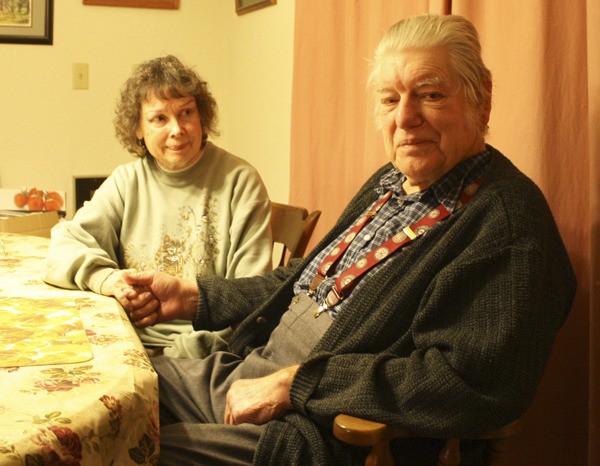Islander Roger Hammett has spent his career on the water. For decades Hammett, 84, worked as a deckhand aboard naval boats, commercial ships and ferries throughout the Puget Sound. He even met his wife as a deckhand on the north end ferry.
About a year ago Hammett learned that it was his maritime career that would ultimately cause his death.
In August of 2010, Hammett was diagnosed with mesothelioma, a terminal lung cancer that resulted from his exposure to asbestos on ships. Hammett was in good health before the cancer, and now doctors say he can expect to die in the next year.
Last week, however, there was a bright spot in what Hammett says has been a “psychological disaster” since he learned his fate.
On Thursday Hammett and his wife Anita, 64, won a lawsuit against Sea-Land, the owner of a boat Hammett worked on for just 67 days in 1966. They were awarded $1.45 million for pain, suffering disability and loss of enjoyment in life.
“I was elated,” Hammett said of the win. “Now I know my wife will be taken care of, and my grandchildren.”
A few months ago Hammett also won a smaller, undisclosed amount when he settled out of court with Washington State Ferries, where he worked for 28 years and was also exposed to asbestos.
Matthew Bergman, Hammett’s attorney, said that although Hammett was exposed to asbestos on several of the ships he spent time on, his exposure was most intense on the SS Seattle, owned by Sea-Land Service, Inc., now Residual Holdings.
A jury determined that Sea-Land didn’t take proper safety precautions regarding asbestos — which was used as insulation on ships until the 1970s — and was 70 percent responsible for Hammett’s disease.
Bergman, whose Seattle-based law firm files around 50 asbestos-related cases a year, said that it’s a common misconception that the risks of asbestos weren’t known until recently. On the contrary, he said, asbestos’ harmful properties have been known since the 1930s, and Sea-Land was in violation of government health regulations regarding the material.
“Whether (Sea-Land) knew, it should have known, because there was a wealth of information available,” Bergman said.
Mesothelioma symptoms usually don’t appear until 20 to 50 years after exposure to asbestos. Bergman said there is now a generation of elderly people who have developed the terminal disease after being exposed to asbestos decades ago on ships, as well as at aluminum smelters and paper mills. In fact, Bergman said, Washington now has the highest rate of mesothelioma in the country because those industries were prevalent in the state.
“So many people worked in one of those industries,” Bergman said.
Hammett began having trouble breathing nearly 20 years ago, a symptom he attributed at the time to asthma. He learned his condition was much worse after he fell in his garden last year, couldn’t breathe and was rushed to the hospital.
Though a surgery Hammett had helps prevent his lungs from filling with liquid, he said the disease has caused him much pain and many sleepless nights.
“It’s a slow, painful death. It’s not like a heart attack,” Hammett said on Sunday as he sat with his wife in their home on Monument Road, where the two have lived for more than 30 years.
Hammett, who is friendly with a dry sense of humor, says he still tries to garden — his favorite hobby — but it’s becoming more and more difficult.
“I use a shovel as a walking stick, and I do OK,” he said.
According to Bergman, most people die within a year of being diagnosed with mesothelioma. Roger says he’s thankful to have made it past that mark, but still feels as if he’s been robbed of life.
Statistics used in court showed that on average a man Hammett’s age will live seven more years.
“That’s what he was looking forward to before he got diagnosed,” Bergman said.
Before going to court, Sea-Land offered the Hammetts a $5,000 settlement, which Roger Hammett called “chicken feed.”
Hammett praised Bergman for his work on the case and said he is glad that his large award will cover hospice care so he can eventually die at home. He also hopes to finish remodeling his house and to build a music room for his wife, who plans to stay on in their home for as long as she can. He’ll leave the rest to his wife, five children and six grandchildren.
Anita Hammett, who is warm and soft spoken, said the ordeal has been difficult for her as well.
“I love Roger deeply, and I wish he didn’t have this disease,” she said. “We just don’t know what the next day is going to bring forth.”



